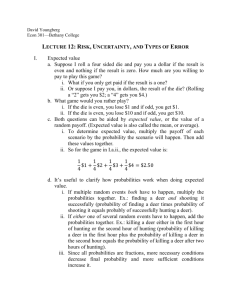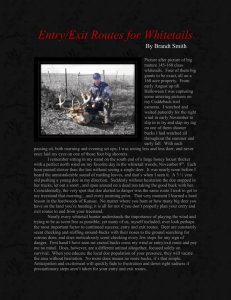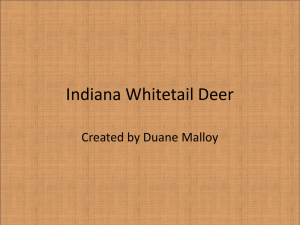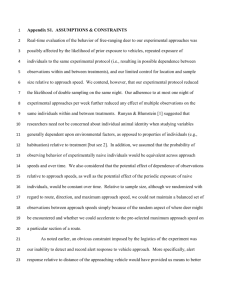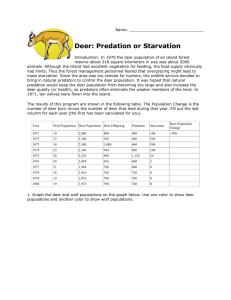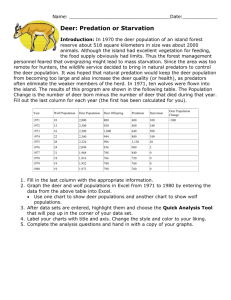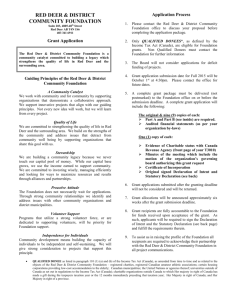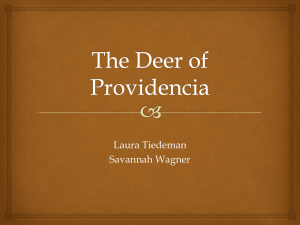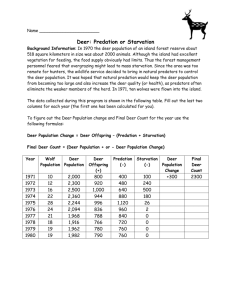Chapter 13animal pops
advertisement
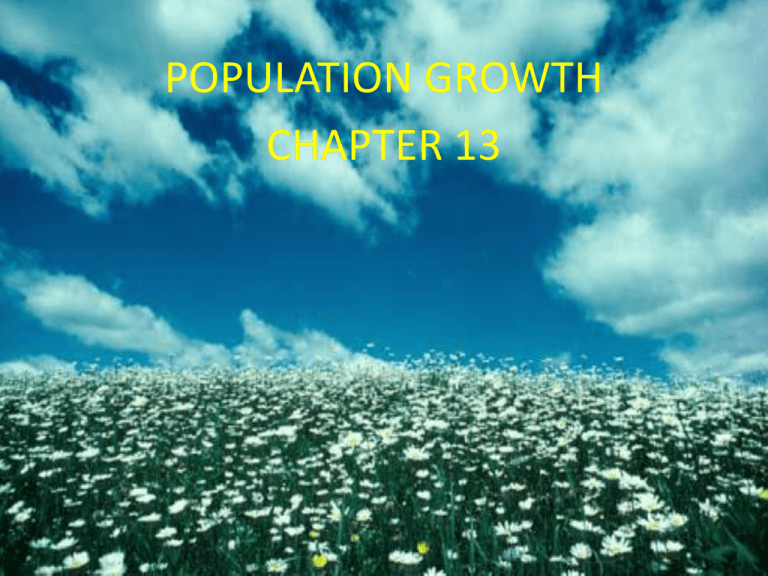
POPULATION GROWTH CHAPTER 13 Chapter 13 Population Growth HOW FAST CAN A POPULATION GROW? • Most organisms produce more offspring than can survive • The maximum growth rate (biotic potential) is the rate at which a population would grow if every individual survived and reproduced. • The population would grow exponentially. Populations Can Grow, Shrink, or Remain Stable • Population calculated by – Births – Deaths – Immigration – Emigration • Population change = (births + immigration) – (deaths + emigration) Exponential Population Growth (when all conditions are perfect) • J – shaped curve. • Exponential growth – as a population gets larger, it also grows faster. • Occurs when there are no factors to limit or slow growth • Look how fast the population grows if all conditions are ideal! However, no population can grow forever • Limiting factors control the size of a population • For animals, limited food, water, shelter and other resources limit population sizes • For plants, limited water, sunlight, space and nutrients Population Density • The number of organisms in an area. The more organisms within a small space = a more dense population. 18 deer/acre is more dense than 8 deer/acre Population Density Effects • Density Dependent– Factors that limit growth as the density increases. Ex. Resources, predation, parasitism, disease • Density Independent– Affect the population regardless of density – Mostly abiotic Ex. Natural disasters, habitat destruction, climate changes Environmental Resistance (all factors that limit the population growth) • CROWDING (density) – Predators, parasites and diseases • LESS RESOURCES – Water, space, food, shelter, etc,… • A population will grow until the environment cannot support any more organisms. This is the carrying capacity. Carrying Capacity • Is the maximum population size an environment can support for a long period of time. • A population may exceed its carrying capacity, but not for long! Most populations fluctuate around the carrying capacity. Logistic Growth (conditions are never perfect) Carrying capacity Time (hours) • When limiting factors control population growth • S-shaped curve (logistic growth) The resulting curve is an S curve (logistic curve) Logistic Growth of a Sheep Population on the island of Tasmania, 1800–1925 Exponential Growth, Overshoot, and Population Crash of a Reindeer Factors affecting population growth 1. Predator/prey – balance one another; ex: wolves 2. Introduced species – impact native species, decreases biodiversity 3. Plant/herbivore – herbivores control plant populations; 4. Overgrazing –plants can’t reproduce fast enough 5. Plant competition – plants release chemicals to inhibit growth of other plants Population Cycles for the Snowshoe Hare and Canada Lynx Why do we care? • Predators and prey influence one another's evolution and control population numbers • Traits that enhance a predator's ability to find and capture prey will be selected for • Traits that enhance the prey's ability to avoid being eaten will be selected for. • Coevolution (Caribbean snail and crab) Case Study: Exploding White-Tailed Deer Population in the U.S. • 1900: deer habitat destruction and uncontrolled hunting • 1920s–1930s: laws to protect the deer • population explosions for deer can creates problems: – Lyme disease – Deer-vehicle accidents – Eating garden plants and shrubs • Ways to control the deer population hunting, introduce predators, relocation, reduce food resources, fencing Kaibab Deer in Arizona how humans affect populations • In 1905, the deer population on the Kaibab Plateau in Arizona was estimated to be about 4,000 on 300,000 hectares of range. • The carrying capacity was estimated to be about 30,000 deer. • The Kaibab forest area was severely overgrazed by sheep, cattle, and horses and most of the tall, perennial grasses had been eliminated in the area. • In 1906 President T. Roosevelt created the Grand Canyon National Park To increase the number of deer, the government banned the hunting of the deer and killed their predators (800 mountain lions, 20 wolves, 7400 coyotes, and 500 bobcats between 1907 and 1939) In 1924, the deer population had increased to 100,000! Way beyond the carrying capacity of the land • The deer did not have enough resources and were starving! In order to restore the herd to a healthy number of deer, hunting was again allowed and by 1939, the population was down to 10,000 • Starvation killed more deer than the predators ever had! • Should humans interfere with the predatorprey relationship?

